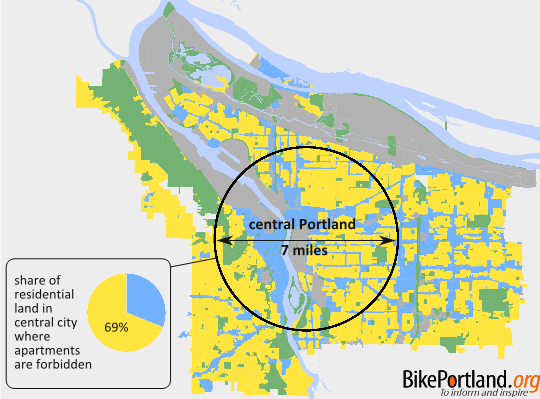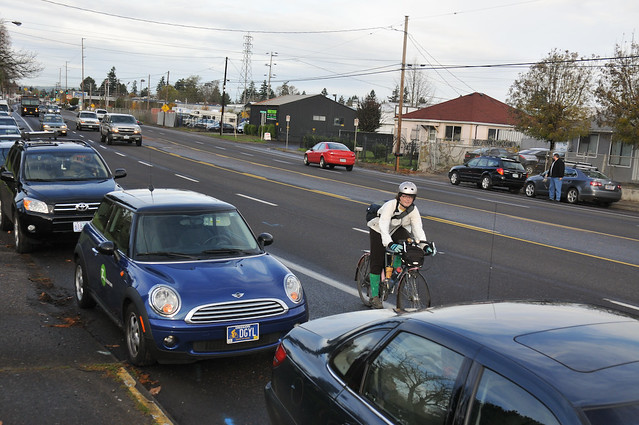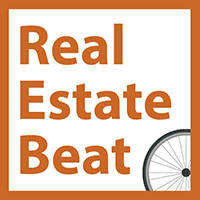The Willamette Week bike issue came out today, which makes this the one day a year when we stoop mooching off their generally excellent reporting and they get to mooch off ours. (Seriously, y’all, no problem.)
But one piece in their nicely put-together bike issue falls clearly in the “wish we’d done that” category: a tally of median single-family home prices per Portland neighborhood ranked by the time it takes to bike to the city center.
“Portland has long been thought of as a cycling mecca for one big reason: Affordable homes were close enough to work to commute by bike,” Willamette Week’s Tyler Hurst writes in the piece, more or less accurately. “Housing prices rose by another 6.6 percent last year, and a February project by Governing magazine found the city is gentrifying faster than anywhere else in the nation. Does the promise of an affordable, bikeable Portland still hold up?”
Hurst defines the problem well:
Consider that the median income for a family in Portland is around $50,000, which financial advisers will tell you means they should not spend more than $315,000 on a house. Also consider that the national average commuting time is 25 minutes each way. So can you find an affordable house in a place that’s about a one-hour round-trip commute to downtown Portland by bike? It’s increasingly difficult.
And Willamette Week’s pick for the most affordable biking neighborhood? It might not come as a surprise if you’ve been on the streets in the area lately:
The best bet for bikers is probably Foster-Powell. There, houses are selling for about $262,000, and the round-trip commute is 66 minutes. And the neighborhood looks to get even better with an upcoming “road diet” plan for Southeast Foster Road. Starting next year, the city will spend $5.5 million to build bike lanes and remove two of the busy thoroughfare’s five car lanes.
“Stripe” would probably be a better word here than “build,” since the $5.5 million will go almost entirely toward walking improvements, not white paint. Ok, to continue…
Two other mid-Southeast neighborhoods are close behind: Woodstock and South Tabor. However, South Tabor is the better value for bikers as living there shaves 12 minutes and nearly three miles from your daily commute. It has a better bike score to match: 84 compared to Woodstock’s 77.
Creston-Kenilworth—roughly the area south of Powell Boulevard between 28th and 50th avenues—also stood out. Homes there are selling for a median price of $330,000, and the cycling commute is 50 minutes.
Advertisement
Missing here, of course, is the fact that lots of jobs and other destinations aren’t downtown; the main reason so many people bike to jobs there is probably that it’s relatively expensive to park there. Census figures suggest that the neighborhoods with the highest bike-to-work percentages are actually in retail-dominated neighborhoods like Northeast Alberta and Northwest 23rd.
In Portland as in most cities, proximity to the core is a pretty good proxy for the underlying factor that drives almost all our transportation decisions: were the buildings in the neighborhood built in an era before we expected everyone to own a car, or after?
But that’s forgivable. In Portland as in most cities, proximity to the core is a pretty good proxy for the underlying factor that drives almost all our transportation decisions: were the buildings in the neighborhood built in an era before we expected everyone to own a car, or after?
The other thing worth adding here is that the article doesn’t mention the existence of 42 percent of Portland’s households: people who live in attached housing units. It considers only single-family homes.
The main disadvantage of a single-family home, of course, is that you can’t fit very many of them onto the same piece of land. The more expensive land becomes, the bigger that problem becomes — and the more important it becomes for cities to allow some other sort of housing to be built.
Sadly, Portland doesn’t seem to be talking much about removing its ban on building multi-family housing on 69 percent of the residential land in the city’s innermost 3.5 miles.
Maybe next year.

WW’s bike issue is online and it includes a full ranking of the city’s neighborhoods. Check it out or just pick up a copy.
— The Real Estate Beat is a regular column. You can sign up to get an email of Real Estate Beat posts (and nothing else) here, or read past installments here. This sponsorship has opened up and we’re looking for our next partner. If interested, please call Jonathan at (503) 706-8804.




